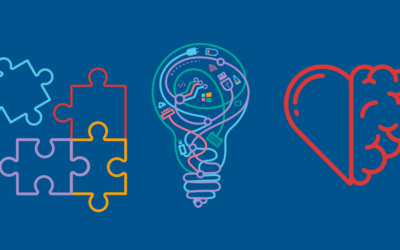 You want to make a sound, thoughtful decision but it’s a tough one. How do you know when you have given adequate consideration? How do you know when it’s time to decide and move on? An executive that I work with calls that question, “Is it soup yet?” Have you collected all the ingredients and let them simmer appropriately? Or have you missed an ingredient or over-cooked the soup?
You want to make a sound, thoughtful decision but it’s a tough one. How do you know when you have given adequate consideration? How do you know when it’s time to decide and move on? An executive that I work with calls that question, “Is it soup yet?” Have you collected all the ingredients and let them simmer appropriately? Or have you missed an ingredient or over-cooked the soup?
In a workshop with association executives, we collectively created this list of decision-making ingredients and indicators of determining that “it’s soup.” First, however, you need to recognize your natural decision-making tendency. Are you naturally a decider or a discusser?
Deciders tend toward fast decisions and may have a tendency to skip ingredients or not simmer the soup long enough. When that happens, you miss valuable input or you make a decision that isn’t thought through as well as it should be.
Discussers tend to collaborate extensively and may have a tendency to endlessly seek out more ingredients or over-cook the soup. When that happens, opportunities are missed due to excessive delays. It’s analysis-paralysis or an intense need to get consensus from all.
You need to know if you are more discusser or decider because that tendency will push you in a particular direction and you will have to balance that with thoughtfulness.
With that background, here is a list of typical ingredients that go into the soup for a big decision:
Facts
- Trends
- Benefits
- Costs
- Resources
- Timeline
- Mission relevance
- Expectations
- Strategic goal alignment
- Analysis
- Perceptions
- Risk
Once you have the ingredients, most decisions (except for those that are urgent such as in a crisis) need some time to meld – like a good soup. How do you know if the decision needs to simmer?
Let it simmer:
- More information is reasonably available that could sway the decision.
- Risk level of the decision will be reduced by waiting.
- The variables in the decision are changing.
- Crucial conversations and buy-in have not happened yet.
- Hidden agendas need more investigation.
- Lack of clarity on ramifications of the decision.
- The current situation is too emotional and needs time to calm down.
- A decision now will create conflict later that could be avoided by waiting.
- There are more pressing decisions to consider now.
- There is no downside to delaying the decision.
- There is no financial loss/gain by waiting.
- The data is not trustworthy.
- The decision feels reactionary
On the other hand, you don’t want to delay the decision unnecessarily. That is like an over-cooked soup where ingredients have become mush. How do you know when you’ve reach that point where it’s time for the decision?
It’s Soup:
- I have all the information I can reasonably get in the timeframe available.
- Additional input is unlikely to change the decision.
- There is a deadline for action.
- I have input from all key people.
- I have an appropriate level of consensus.
- The situation is too painful and frustration is too great to wait longer.
- The situation will not change or may deteriorate by waiting.
- An opportunity will be missed by waiting.
- Research is decisive.
- Delay would cause a cost increase that would outweigh the benefits.
- The risk level will stay the same or increase by waiting.
- You just know that it’s time to decide.
Lastly, go back to your natural tendency and take steps to balance it with thoughtfulness. For natural discussers, you may need to push yourself to a decision before you are completely comfortable. For natural deciders, you may need to hold back on a decision for more simmering even though it feels uncomfortable.
Now you’ve got the recipe for balanced decision-making. Soup’s on!





0 Comments